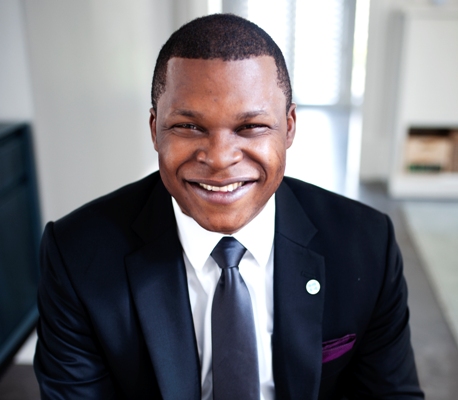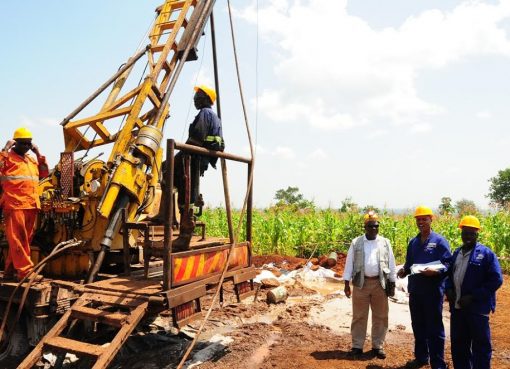By NJ Ayuk
To meet their green agendas, the European Union, United States, and China are engaged in the modern-day equivalent of a gold rush.
This time, though, fortune seekers aren’t panning for shiny nuggets in Canada, America, or Australia. Instead, all eyes are on the critical minerals of Africa — cobalt, graphite, lithium, and others — raw materials essential to the production of clean technology, including electric vehicles (EV).
To say that Africa is generously endowed in this regard seems almost like an understatement. Africa holds more than half of the world’s reserves of cobalt, 46% of its manganese, and 21% of its graphite, all used in EV batteries, and about a quarter of its bauxite, which is required for solar photovoltaic technologies. Beyond reserves, mining and production are already in full swing in a number of countries: Nearly 70% of all cobalt produced globally comes from the Democratic Republic of Congo (DRC) and that country is tied with Peru as number two behind Chile in the mining of copper, a key component in electric wiring. Lithium, which has applications in everything from EV batteries to the lubricants that help wind turbines spin, is also being mined in the DRC, as well as in Zimbabwe and Namibia, while Ghana and Mali have lithium deposits that aren’t being exploited yet. Namibia is also the world’s second-largest producer of uranium, which is used in nuclear energy.
Given the urgency of the energy transition, it’s no surprise that the market for critical minerals and rare earth elements (a group of 17 light and heavy metals and alloys integral to the performance and efficiency of motors and turbines; there are 100 rare earth element deposit sites in Africa) is strong and growing. For example, the International Energy Agency (IEA) predicts that as the world moves away from fossil fuels manufacturers of clean energy technologies will require exponentially more critical minerals than they do today. Specifically, the IEA says that by 2040 demand for lithium will be more than 40 times what it is now; over the same period, the need for graphite and cobalt will be 20-25 times higher. As far as copper, the expected expansion of the electric grid over the next 17 years means demand will likely double.
In short, opportunity abounds for Africa, especially considering the shortage of critical minerals nearly everywhere else — if we can only harness it.
This is a particularly timely topic as the 2023 United Nations Climate Change Conference (COP28) wraps up and voices around the globe continue to weigh in on what Africa should do (or not do) with its oil and gas.
If we’re going to be honest, we must admit that we don’t always have the best track record when it comes to turning resource wealth into actual wealth for our people. But I believe we can break away from that pattern.
Out of our hands
For too long, for lack of will and domestic policy, we’ve allowed our raw materials, including oil and natural gas, to be exported, meaning we’ve had no hand in the processes that happen next or the sale of finished goods.
As a result, we’ve missed out on the job creation, industrialization, and economic diversification that downstream development represents, not to mention the money that comes with it: It’s just an economic fact of life that processed materials command a premium price compared to raw materials.
Consider the DRC’s massive cobalt and copper mine, Tenke Fungurume, which has been in production since 2009 and is projected to have 32 years’ worth of reserves.
China Molybdenum Co. (CMOC), the world’s largest cobalt producer, owns 80% of the mine, with Gecamines, DCR’s state-owned mining firm, holding the remaining 20% stake.
As if controlling the mine’s output — some 125,387 tonnes of copper and 10,465 tonnes of cobalt in the first half of 2022 alone — wasn’t enough, CMOC also controls 72% of the refining capacity for the mine’s output. But CMOC doesn’t refine those minerals in Africa; instead, they transport unprocessed minerals to ports in Durban, South Africa, and Dar-es-Salaam, Tanzania, for overseas export.
That’s a lot of potential revenue — a lot of potential, period — we’ve let leave our shores.
To take full advantage of the critical minerals beneath our feet, we must break free from our “mining-only” mindset. The value chain doesn’t have to stop with extraction.
Yes, I understand the argument that minerals should be manufactured into products closer to where they will be used, and that Africa lacks, for example, both the manufacturing capacity to turn cobalt into EV batteries, and the market for EV cars. (Young African entrepreneurs have taken aim at this deficit, as you’ll see in a moment.)
But with sufficient investment and collaboration, we can build capabilities and catalyze the market.
The good news is that we’re seeing progress in that direction.
- In April 2022, the DRC and Zambia signed a cooperation agreement to make EV batteries in Katanga province, the mineral-rich region where Tenke Fungurume is located. That was followed in December by the U.S. entering into a trilateral memorandum of understanding (MOU) with those countries to develop a complete value chain around EV batteries, “from extraction to the assembly line. To move the deal along, earlier this year, the African Export-Import Bank (Afreximbank) and the United Nations Economic Commission for Africa (UNECA) are helping the DRC and Zambia form special economic zones (SEZ) for the production of battery precursors, batteries, and EVs. According to the United Nations, “the Afreximbank and UNECA will play a central facilitating role, acting as the project’s financial and technical partners respectively. The two institutions will lead the establishment of an Operating Company (OpCo) in consortium with investors (both public and private) from DRC and Zambia, as well as international investors such as Afreximbank’s impact fund subsidiary, the Fund for Export Development in Africa (FEDA).”
- Both the DRC and Zambia, along with Mozambique, Namibia, and Tanzania, attended the recent Minerals Security Partnership (MSP) meeting to discuss how to improve mineral supply chains and ensure that countries can benefit economically from their critical mineral resources. The U.S., U.K., Australia, Canada, France, and Japan were among the MSP partners who participated in the event. The goals of the MSP are to attract public and private investment, increase transparency, and promote Environmental, Social, and Governance (ESG) standards in critical mineral supply chains.
- In addition to Toyota setting up shop in Durban, South Africa, to assembly hybrid EVs from “semi-knocked down” imported vehicles and Uganda’s Kira Motors converting internal combustion engine-powered buses into EVs, a small industry of EV motorcycle manufacturers has cropped up in Rwanda, Nigeria, Uganda, Kenya, and South Africa, potentially accelerating the growth of a much-needed domestic market and circumventing the need for the expensive, grid-scale charging infrastructure four-wheeled vehicles require. These companies are building EV motorcycles from the ground up and subbing EV motors for conventional ones in existing bikes. As Dr. Marit Kitaw, interim director of the African Minerals Development Centre (AMDC), noted, this is evidence that “the continent’s technical and manufacturing capabilities can be scaled up with supportive policies, skill-building programs, infrastructure development, and a favorable investment climate.”
- Speaking of the AMDC, the organization, which the African Union established in 2013, has developed the African Green Minerals Strategy (AGMS) to help African nations make the most of their extractive resources, participate more fully — and do it sustainably. According to Dr. Kitaw, the objectives of the AGMS are to accelerate local manufacturing of inputs for mining and processing strategic green minerals; build more processing facilities on the continent, which would enable African countries to capture a greater share of the value chain; and expand Africa’s technical expertise and to increase resources for research, development, and innovation.This is what progress looks like.
Work to do
Still, obstacles remain. And we have to proceed with caution.
While agreements like those between DRC and Zambia are a start, our nations must collaborate more closely, especially when it comes to issues like establishing a common external tariff (CET). That would serve to avoid a patchwork approach to imports and make it easier for African countries to do business across borders.
We have to build up our energy infrastructure so we can support processing and refining.
We have to ensure our governments are stable and our streets are not pocked with violence, which turn potential investors away in droves.
We must avoid the human rights violations that have plagued other extractive industries in Africa, ensuring workplaces are safe; indigenous people are not at risk; workers’ living conditions meet universally accepted standards; the physical environment is protected; and children are not put to work when they should be in school.
As the world pivots to a low-carbon future, Africa has a chance to change where we sit on the critical minerals value chain and, in turn, to change our destiny. But there’s tremendous work to do, and it has to be done right. With the right partners and support, within our continent and worldwide, it will be.
The author is the Executive Chairman, African Energy Chamber





